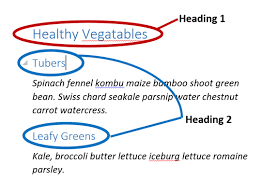Creating relevant website text may seem like a no-brainer or an unqualified freelance activity. Nothing more false! Attractive, engaging, and engaging writing often requires theoretical, journalistic, and creative writing skills. Let's not risk creating texts for the sake of filling the pages.

Here are the steps you can take to create authentic content for your website:
- Know your audience
To design good and relevant materials for your audience, you need to know exactly who you are targeting. "Who is my main audience?" is the key question that needs to be answered. Here are some helpful questions to end the reader's avatar:
- What are the aims/objectives of the Avatar?
- What are Avatar values?
- How old is the Avatar?
- Is your avatar a Woman or a Man?
- What is the situation of the Avatar in the family? Married / Unmarried / Divorced?
- How many children does the Avatar have and what is their age?
- Where does your Avatar live?
- Write short, simple sentences
No matter how interesting your content sounds, if you are missing a few simple rules for arranging words in a sentence, you may not be able to read them. Here the solution lies in simplicity, namely:
- Put up to 20 words in the sentence.
- Focus on the use of nouns and verbs in active and present diathesis. Even if it doesn't sound intuitive, you always address a single person, and usually in the context of a site you want to motivate him to take action. Be direct and charming in achieving your goals.
Use adverbs and adjectives in moderation. Don't throw yourself into personal praise, first of all, because saying "the best company" is not acceptable, and secondly because potential buyers do not appreciate a pompous and praiseworthy speech at their address.
Jump over unnecessary style figures follow a common communication protocol and arrange the information on the website. There is no need to be overzealous when presenting an economic agent, be impartial and open to collaborations, rather than metaphorical and enigmatic.

- Show them, do not only declare:
It is better to show your performance through numbers and concrete achievements. Such as:
- Specific real-world examples help readers to better understand and visualize messages.
- Case studies/reviews/statistics (figures and data always have a positive impact).
- Completes texts with thematic diagrams or images (also optimized).
Do not use slang:
You're a professional, we believe you. But don't throw yourself in technical terms, because you're doing your audience a disservice. Here are 2 filters to pass the jargon used on the website:
- Your site is for everyone, not just technical experts. Explain clearly, as for uninitiated people.
- Make sure the information is understandable to all visitors and it adds value.
Tip: the blog is useful for more details and perspectives offered in more specific terms, but be careful, they need to be explained in detail.
- Make the text easy to read:
- Use the headings to structure the text. These are useful for readers who do not read in depth, and for search engines, which appreciate organized information. Here's what they look like in the text:

- It is good to have the basic keyword present in the headings, to cover the SEO part as well.
- A maximum of one H1 (Heading 1) is used in the text.
- Use lists whenever you have the opportunity. They are easy to navigate and provide clarity to your reader.
- Here's an interesting idea for structuring a text: headings can be questions that people interested in the topic would ask in Google. Can you organize your entire text according to the question-and-answer formula?

- Make sure every page on the site has at least one image:
The first argument we will provide to you is that people process visual information 60,000 times faster than they perceive the text. Don't ignore media, just because search engines don't pay special attention to it. Google officially recommends at least one image per page, because visitors are not texters. Here are some media formats you can use: graphics, infographics, and pie charts.
Useful tools for producing intelligible and useful media content: Canva.com & Piktochart.
- You have to urge people to take action:
You're writing to convince. Then, in addition to the correct use of language, it also gives clues to people about what to do next. Keep these short tips and start with verbs like:
- "Download"
- "Share"
- "Join"
- "Sign up"
- "Find out more"
- "Follow"
- "Subscribe".
- Bring value:
Yes. We just mentioned above how important it is for the language to be simple and understandable to a wider audience. However, avoid exposing banalities and things that are self-evident. The texts must be as unique as possible (not to coincide with what other sites have written, and also be exhaustive.
- Use SEO Copywriting
As a last tip, but not the last, we suggest you adapt your texts to SEO from the beginning. Here are some rules that will turn your creative writing into SEO Copywriting:
- Keywords (represented by keywords and phrases that people enter in the Google search box to find the information they are looking for) are used as families (5-6 words that refer to the same group and a main keyword - with multiple searches, be present in the title, in the first paragraph, and in the text).
- Google understands synonyms and words that refer to the same object/domain/phenomenon and gives credit for their use together in the same text.
- Keyword overload should be avoided - the same keyword should be used up to 10 times in 500 words).
Follow these 9 golden rules and you will have good content that will describe your service/product from the most favorable angle possible.
